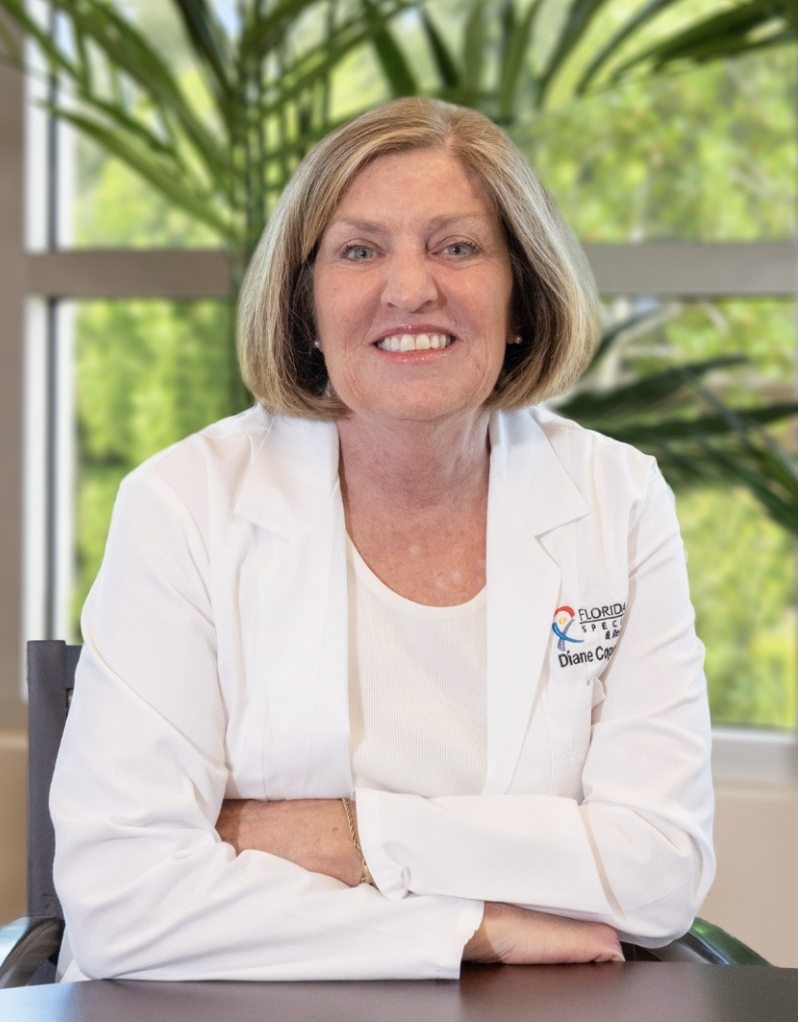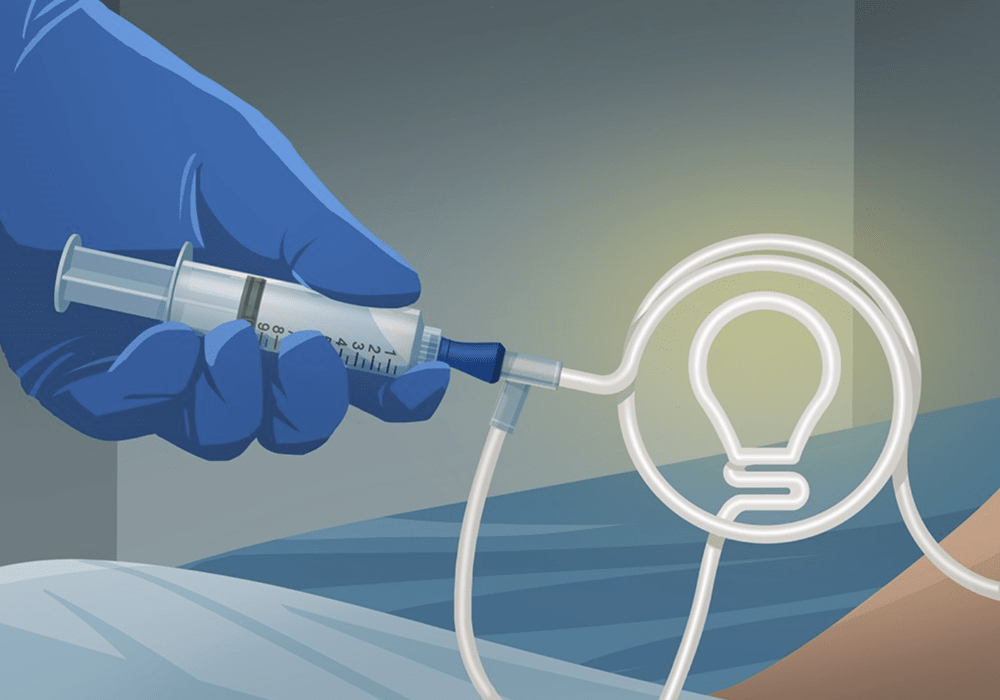Venous access devices are ubiquitous in nearly every direct care nursing setting. But as technology becomes more complex and new evidence emerges, nurses must evaluate it against their current practice: Should I use saline or heparin to flush this access device? Am I placing this peripheral venous catheter correctly? What does the latest evidence say? Do I need to implement a practice change?
ONS’s newly published fourth edition of Access Device Guidelines: Recommendations for Nursing Practice and Education is a nurse’s critical companion when it comes to central catheters, ports, access and infusion devices, and more. Released in October 2023, the newest edition shifts the previous practice standards to guidelines, “based on the current evidence available surrounding access device practice and the process used to update and develop the text” (p. viii).
Primary changes in the new edition involve catheter designs, such as short and long (ultrasound-guided) IV catheters; expanded use of chlorhexidine gluconate for dressings, antiseptics, and bathing; strategies to prevent infections; and overall monitoring.
The Evidence for Saline Versus Heparin Locking and Flushing for Access Device Maintenance
Oncology nurse scientists and other researchers have compared saline to heparin in various studies and systematic reviews throughout the past decade, ONS member Diane G. Cope, PhD, APRN, BC, AOCNP®, an oncology nurse practitioner at Florida Cancer Specialists and Research Institute in Fort Myers, said. Cope authored the “Access Device Evidence-Based Recommendations for Practice” chapter in Access Device Guidelines. Most of the researchers found that normal saline is safe and efficacious in preventing catheter occlusion in adult patients with central venous catheters. The swap provides a potential alternative to heparinized saline, particularly in the context of potential risks, such as coagulation disorders, hypersensitivity reactions, and heparin-induced thrombocytopenia, and lowers costs of care.
Based on that evidence, Cope said that leaders at Florida Cancer Specialists and Research Institute decided to stop use of heparin flushes. “The decision was presented for open review and discussion prior to the practice change,” Cope said. “A key factor with the discontinuation of heparin was the importance of pulsatile flushing, which was included in the implementation education.”
Nurses must also consider patient-specific factors, Cope said. For example, some patients may be concerned about switching from the heparin flushes, so her institution made a patient education sheet to explain the risks and benefits. If patients still want heparin flushes, nurses can respect their wishes but closely monitor their platelet counts.
Flushing protocols are also changing based on the latest research. Most manufacturers recommend four weeks between two consecutive flushing procedures during periods when totally implantable venous access devices are not in use, Cope said, but during the COVID-19 pandemic, clinicians considered lengthening intervals to reduce potential exposure and spread of the virus. Although no guidelines recommend a flushing frequency of more than four weeks, Cope said that systematic reviews and meta-analyses suggest that flushing every eight weeks is not associated with increased complications and is feasible and safe.

The Evidence for Peripheral Venous Catheter Placements
One of the most notable changes in recent use of access devices is related to peripheral vein catheter placement. Given the frequent infusion requirements for chemotherapy and supportive care, such as blood product transfusions, traditional manual access can be quite challenging. Dehydration or lymphedema may also make successful placement difficult.
“Historically, ultrasound guidance has been readily used by vascular access teams in the inpatient and emergency settings,” Cope said. “Given the solid research findings that suggest significant benefit for patients and providers, ultrasound guidance for peripheral vein catheter placement would be advantageous for patients with cancer with difficult access in many care settings.”
Ultrasound guidance has been shown to decrease time, pain, and the number of punctures while also increasing successful first attempt placements and allowing for larger catheter gauge, when needed. Cope said that those advantages came about after the release of a specialized probe that enables real-time needle-depth markers.
Current and future studies are exploring additional advancements to prevent damage to vessels and protect entry sites, including avoiding skin trauma, preventing infection, and reducing or eliminating complications, Cope said.

Implement New Access Device Guidelines in Practice
ONS member Mary Jo Sarver, MN, ARNP, AOCN®, CRNI, VA-BC, LNC, a clinical nurse specialist in oncology and infusion services at Providence Regional Cancer Partnership in Everett, WA, authored the chapter “Education, Documentation, and Legal Issues for Access Devices” in Access Device Guidelines. She said that although the advancements and their practice implications are exciting, nurses must always be mindful of individualized care.
“Change can be exciting, but it’s also intimidating,” Sarver said. “The main goal is patient safety and comfort with using the new technology or products to prevent errors.”
Cope agreed and added that it’s critical to involve staff who are affected early on.
Prior to changing or expanding the environment of care in which a device or technology is used, consider conducting a preassessment to ensure appropriateness, Sarver said. For example, needleless injection caps come in a variety of designs (positive pressure, negative pressure, and neutral pressure), and each one has a different flushing, clamping sequence, and syringe removal process to assist with maintaining catheter patency.
Sarver emphasized that when introducing new techniques or devices, staff and patient training are key. Cope added that leaders should provide the rationale for the change in addition to verbal and written instructions, then follow up and evaluate the change through outcome measures.
Sarver recommended that managers use the traditional nursing process when implementing new approaches:
- Assessment: Why are you considering a new approach?
- Diagnosis: Is it right for your patients? Are there contraindications? Is mindful monitoring required?
- Outcomes identification: What outcomes will allow you to assess how it affects the patient population? How will the data be gathered? Who will monitor it?
- Planning: When, where, and who will be involved? Who is providing the training?
- Implementation: Who will implement it and when?
- Evaluation: Did it accomplish the outcomes you identified? Do you have questions or concerns? How long will you track the outcomes?
“Used improperly, new devices or technology can not only harm patients but defeat the purpose of using the product, usually at an increased cost,” Sarver said. The process guides implementation while mitigating the potential for poor outcomes.
New processes or devices can also put individuals and their institutions at risk for potential litigation. Sarver encouraged organizations to ensure trainers are well-versed in the new approaches and their applicability for specific care environments.
“I have been a part of many changes over the years,” Sarver said. “Some worked out well, and others, let’s just say, were learning experiences.” See the sidebar for a summary of her recommendations.






